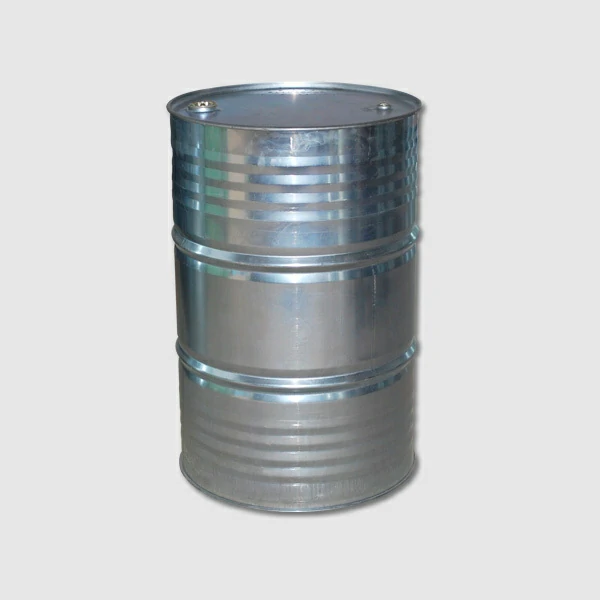1,5-diazabicyclo[4.3.0]non-5-ene (DBN) and 1,8-diazabicyclo[5.4.0]undec-7-ene (DBU) are both commonly used organic bases in organic chemistry, but they have some differences in terms of reactivity, steric hindrance, and applications.
Here’s a comparison between DBN and DBU:
- Chemical Structure:
- DBN has a bicyclic structure with a smaller ring size (4,3,0), which can lead to less steric hindrance compared to DBU.
- DBU has a larger bicyclic structure with a larger ring size (5,4,0), which can result in greater steric hindrance.
- Basicity:
- DBU is known for its very high basicity. It is a strong organic base and is effective for deprotonating a wide range of acidic compounds.
- DBN is also a strong base but is generally considered to be slightly less basic than DBU. This can be an advantage in reactions where over-deprotonation is a concern.
- Steric Hindrance:
- DBU has a larger structure, which can result in increased steric hindrance in some reactions. This can be both an advantage and a limitation, depending on the specific reaction requirements.
- DBN’s smaller structure often results in less steric hindrance, making it more suitable in reactions where steric factors need to be minimized.
- Applications:
- DBU is commonly used as a base catalyst in various chemical reactions, such as nucleophilic substitutions, deprotonations, and condensations.
- DBN is often used in reactions where steric factors or over-deprotonation issues need to be considered, and in some cases, chemical 1,5-diazabicyclo[4,3,0]non-5-ene (DBN) it can be a milder alternative to DBU.
- Selective Deprotonation:
- DBU can be less selective in some reactions because of its higher basicity and steric hindrance, potentially leading to over-deprotonation.
- DBN is often chosen for reactions that require selective deprotonation of specific functional groups.
- Solubility:
- Both DBU and DBN are typically soluble in common organic solvents, making them suitable for a wide range of organic reactions.
The choice between DBN and DBU depends on the specific needs of a given reaction. While DBU is generally stronger and more basic, DBN’s smaller size can make it more suitable in reactions where steric factors or over-deprotonation are concerns. Researchers select the base that best fits the requirements of their synthesis to achieve the desired outcome.
What safety considerations should be taken into account when working with DBN in the lab?
When working with 1,5-diazabicyclo[4.3.0]non-5-ene (DBN) in the laboratory, it’s crucial to prioritize safety. Here are some safety considerations to keep in mind:
- Personal Protective Equipment (PPE):
- Always wear appropriate PPE, including lab coats, safety goggles, and gloves, to protect your skin and eyes.
- Ventilation:
- Work with DBN in a well-ventilated laboratory hood to ensure that any potential fumes or vapors are safely removed from the workspace.
- Storage:
- Store DBN in a cool, dry place away from incompatible chemicals. Follow any storage recommendations on the material safety data sheet (MSDS).
- Handling:
- Handle DBN with care, and avoid any direct skin contact. Use a spatula or proper lab tools to transfer and measure the compound.
- Chemical Compatibility:
- Be aware of the chemical compatibility of DBN. It is a strong base and can react with various substances. Ensure that glassware and containers used are appropriate for working with strong bases.
- Spills and Accidents:
- In case of spills, neutralize any spilled DBN with a suitable acid, such as acetic acid, and then clean it up using absorbent materials. Follow your lab’s spill response procedures.
- First Aid:
- Know the location of emergency eye wash stations and safety showers. In the event of skin or eye contact, rinse thoroughly with water and seek medical attention if necessary.
- Waste Disposal:
- Dispose of waste containing DBN as hazardous waste. Follow local regulations and your institution’s waste disposal procedures.
- Labeling:
- Clearly label containers containing DBN with appropriate information, including the chemical name, concentration, and date.
- Training:
- Ensure that personnel working with DBN are properly trained in its safe handling and have knowledge of the associated hazards.
- Emergency Response:
- Know the emergency procedures for your laboratory and the location of safety equipment, fire extinguishers, and emergency exits.
- Material Safety Data Sheet (MSDS):
- Familiarize yourself with the MSDS for DBN to understand its properties, hazards, and recommended safety practices.
- Risk Assessment:
- Conduct a risk assessment before working with DBN to identify potential hazards and implement appropriate safety measures.
Always follow the safety guidelines provided by your institution and consult with your laboratory’s safety officer or supervisor for specific safety protocols and best practices when working with DBN or any other hazardous chemicals.

